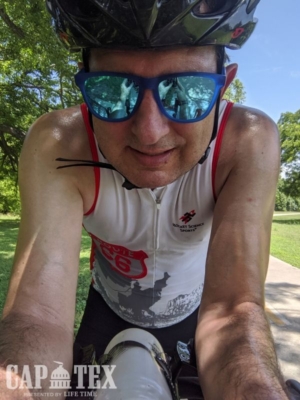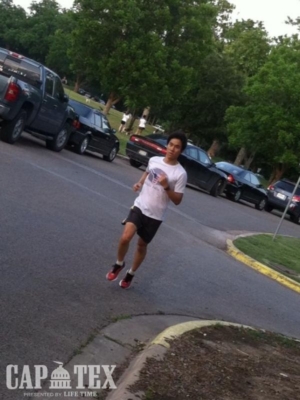Avoid Knee Pain During Triathlon Training
If you experience knee pain during your training, you’ll want to make some changes to the way you train as well as look into what could be causing the pain. The source of the pain can come from any of the three tri disciplines, so you’ll want to pay close attention to when you feel discomfort to address the problem source. While you do not have to stop training, it’s important to ease up on your training intensity and make some adjustments to the way you train to combat the pain and prevent further harm/damage to your knees. Follow these tips to avoid knee pain during your tri training.
What’s the Problem?

Knee pain is a common problem we hear about in the world of triathlon because you’re training for two sports known to cause knee pain. Best described as pain felt above, below, or behind the kneecap that is caused by overuse or misuse during specific physical activities. Knee pain is very common for triathletes, but most often stems from the incorrect form while running or cycling. It can lead to swelling and even grinding or cracking sounds when doing any physical activity, so it’s best to get to the root of the problem before it’s too late.
Train Without the Pain
Swim
Swimming is the lowest impact on your body in a triathlon. For this reason, it’s the safest alternative to turn to when dealing with knee pain. When hitting the pool for a workout, find a swim stroke style that causes the least amount of discomfort in your knees. Swimming is also an excellent way to alleviate current pain and help you avoid causing any further damage. You can also try focusing on arm-only workouts and use a pull-buoy to avoid making the problem worse.
Bike
Knee pain is typical when riding for extended periods for any athlete. Avoid riding on hilly terrain or unpaved roads to avoid putting too much strain on your knees. Another thing that could be the cause of your knee pain is incorrect bike fit. You can fix this with minor tweaks, like correctly adjusting your saddle height. While this seems minuscule, it impacts your knees much more than you may think. Suppose you are experiencing more pain than usual when out for a ride, this is an indicator to ease up on your training rides. Deal with your current injury to prevent permanent damage.
Run
Typically, running is where athletes feel the most pain and discomfort during training. Running is known to be hard on your joints, but there are ways to reduce this to keep reaching your triathlon goals. An alternative workout for knee pain we recommend is aqua running. If running is especially painful for you, take some time to evaluate your form when you run. Make sure you’re running lightly while maintaining a comfortable stride to avoid heel-striking.
Try training with a group or with a professional coach who can watch your technique and form to help find the source of your problem. It’s always great to have people looking out for you. Plus, you’ll enjoy getting advice from those more familiar to the sport if you are just starting.
When in Doubt, Stretch It Out

Pain in any joint is attributed to the tightness and strength, or lack-there-of, in the muscles around it. This is why flexibility and mobility are so essential to avoid further knee pain. There are a number of knee-specific stretches you can do. Most athletes find the effects of stretching properly essential to dealing with knee pain during training. These stretches almost instantly alleviate knee pain and can be done in front of the tv, or anywhere you’d like. You can also incorporate yoga for triathletes into your training to work on strengthening the knee while increasing your flexibility.
Take a Break When Needed
If you are experiencing extreme knee pain, take some time off when training to prevent causing permanent damage. While this may be tough or feel counteractive, you’ll thank yourself in the long run (pun intended). Pay attention to your body, and take a break if you need to. With the help of these tips, save yourself the trouble and avoid knee pain from happening down the road.



 2. Veloway
2. Veloway 1.Violet Crown
1.Violet Crown


 Adding a warm-up and cool down into your fitness routine is a simple, yet proven way to maximize your benefits when working out. The warm-up gives your body a chance to prepare for your session while the cool-down then helps you focus on slowing your breathing and return to your normal heart rate. Rather than seeing it as an optional part of your workout, think of warming up and cooling down as part of your session to get the most out of all the hard work you’ve put in!
Adding a warm-up and cool down into your fitness routine is a simple, yet proven way to maximize your benefits when working out. The warm-up gives your body a chance to prepare for your session while the cool-down then helps you focus on slowing your breathing and return to your normal heart rate. Rather than seeing it as an optional part of your workout, think of warming up and cooling down as part of your session to get the most out of all the hard work you’ve put in!